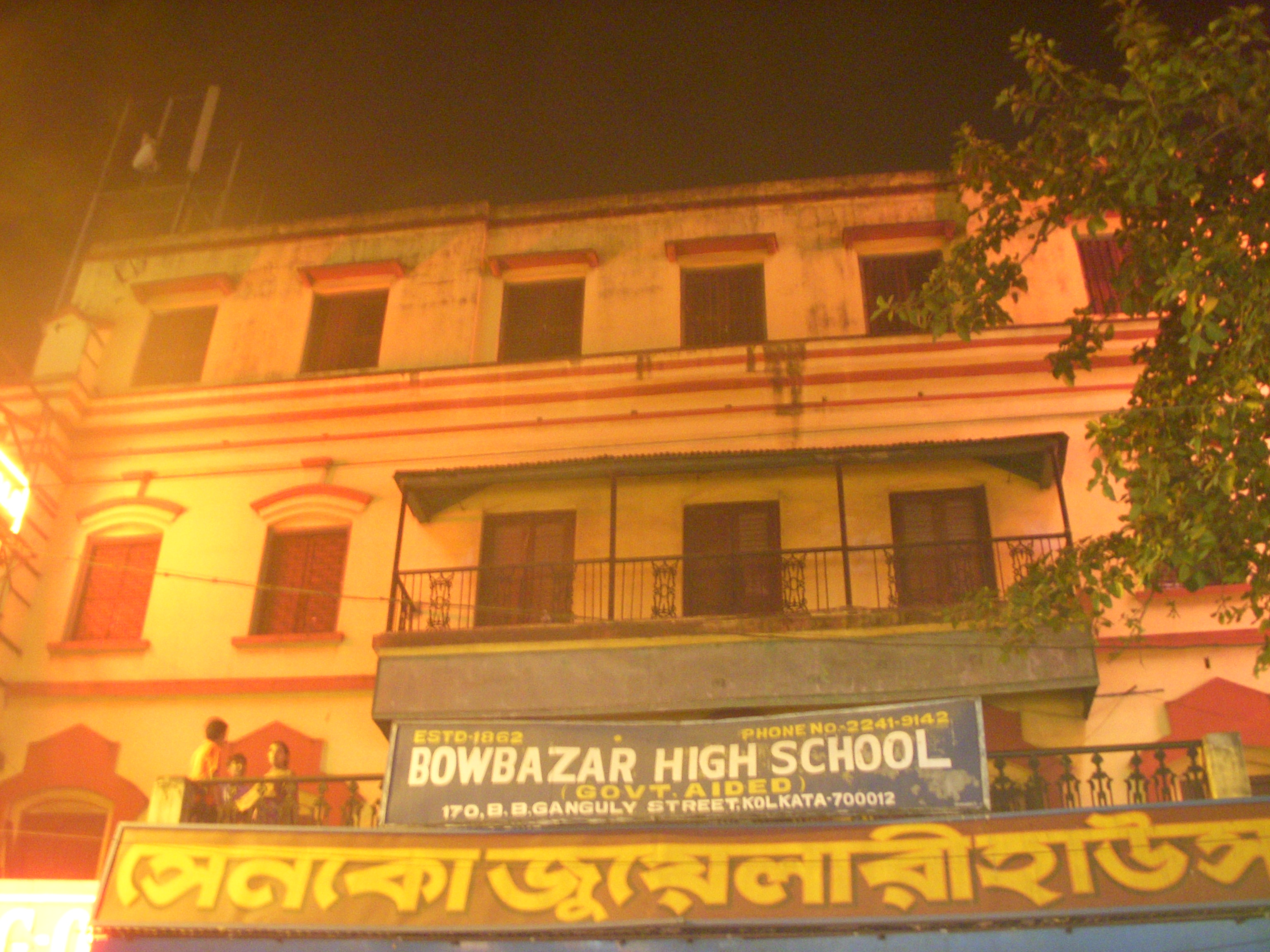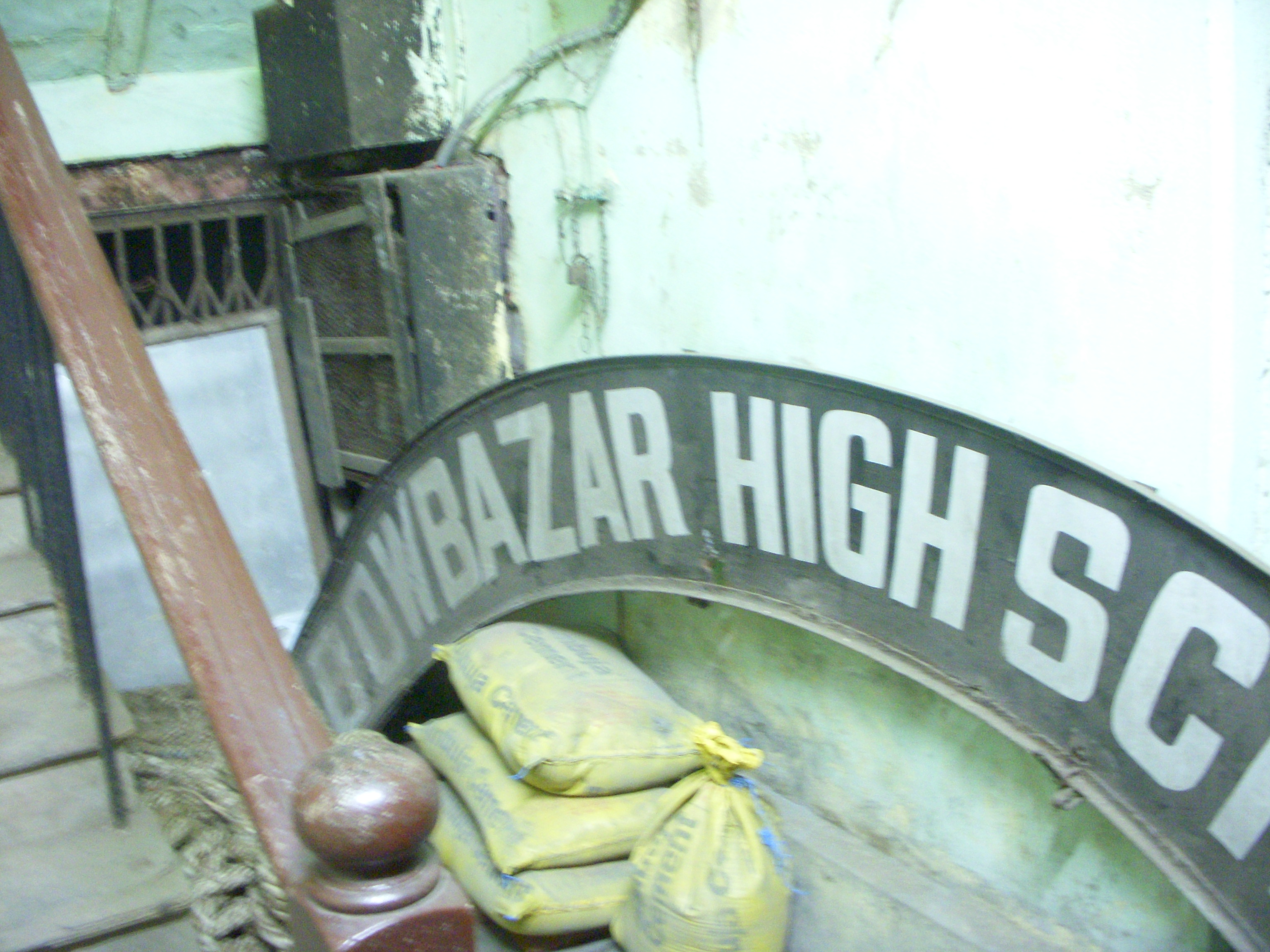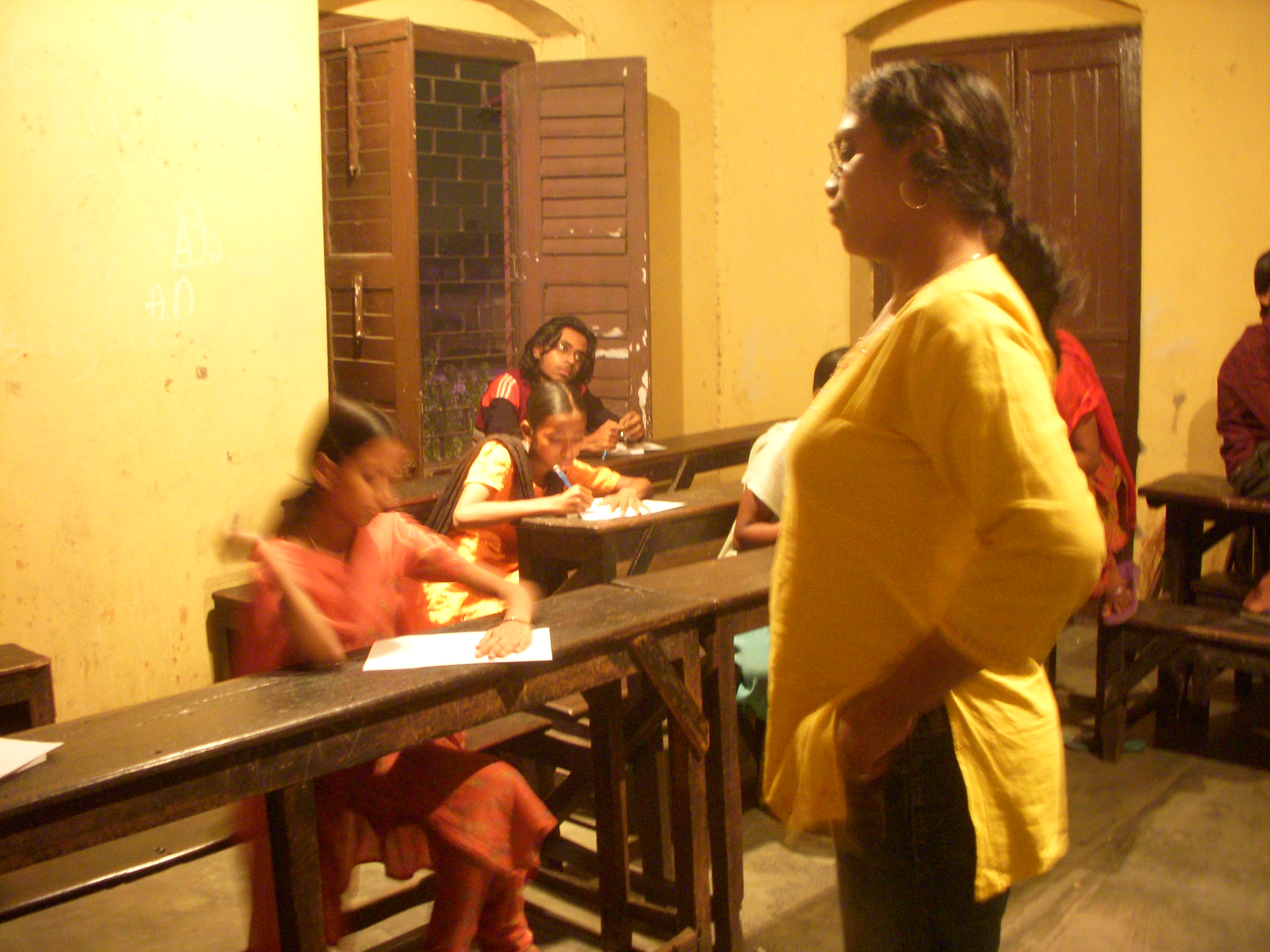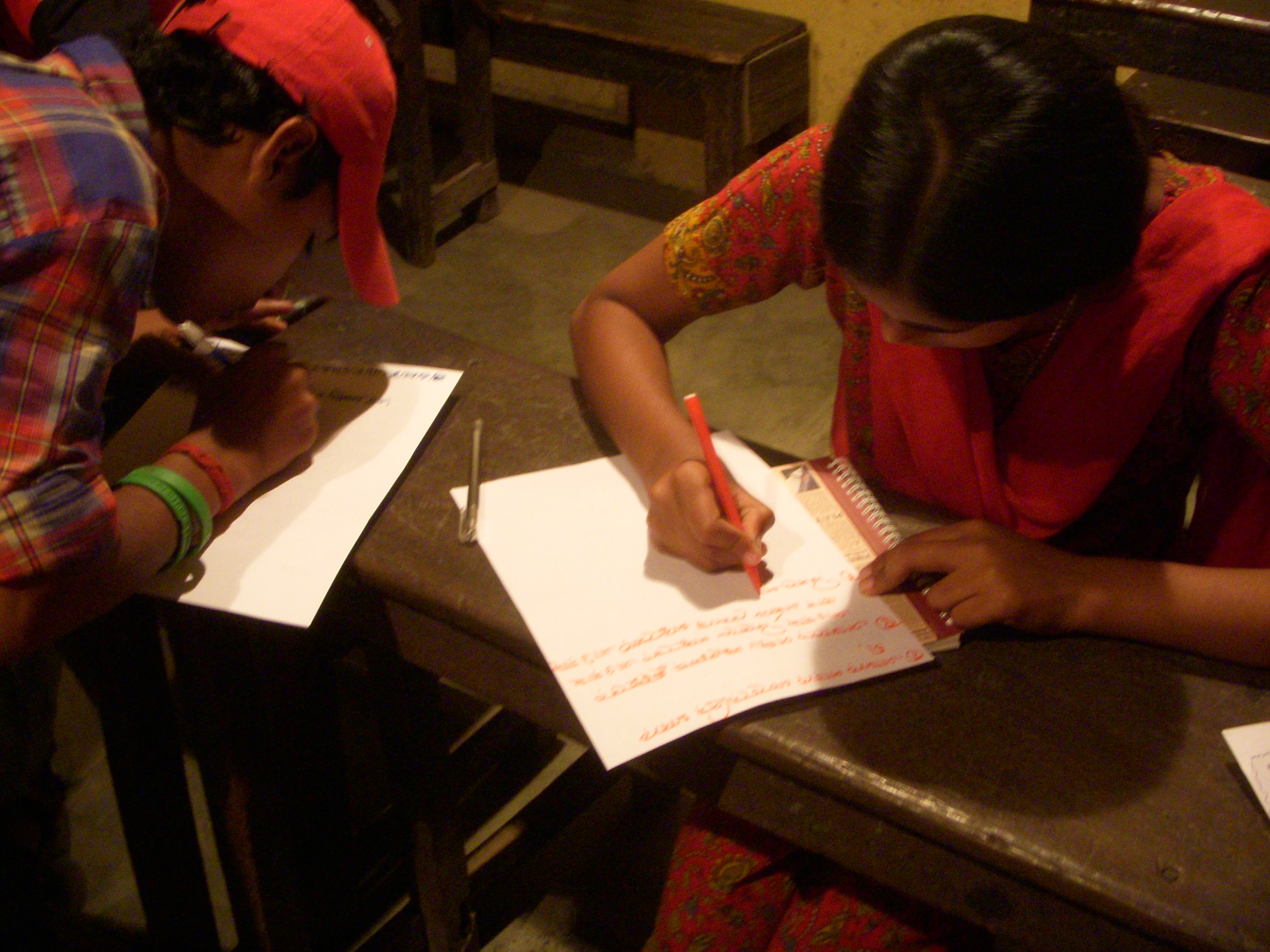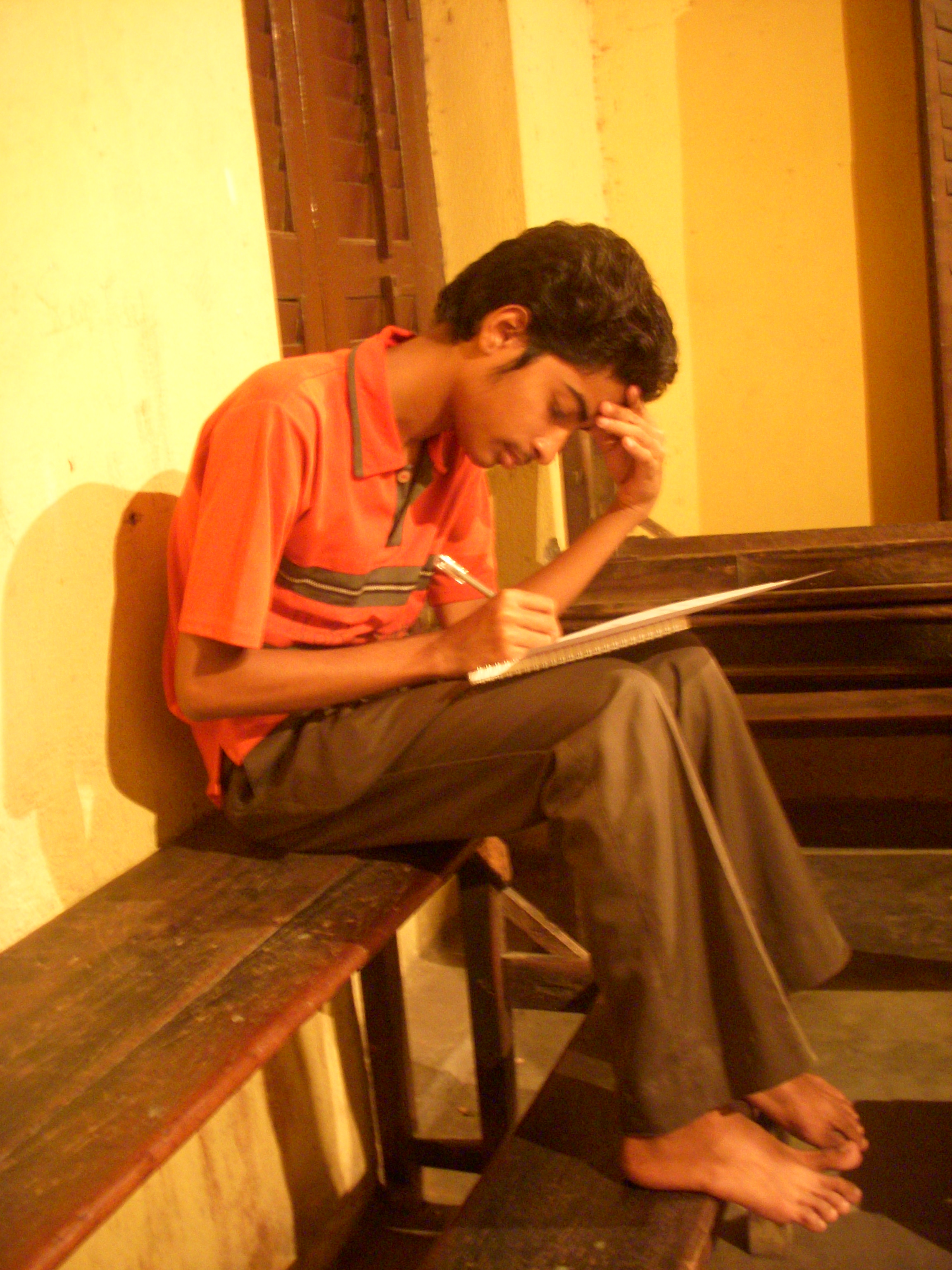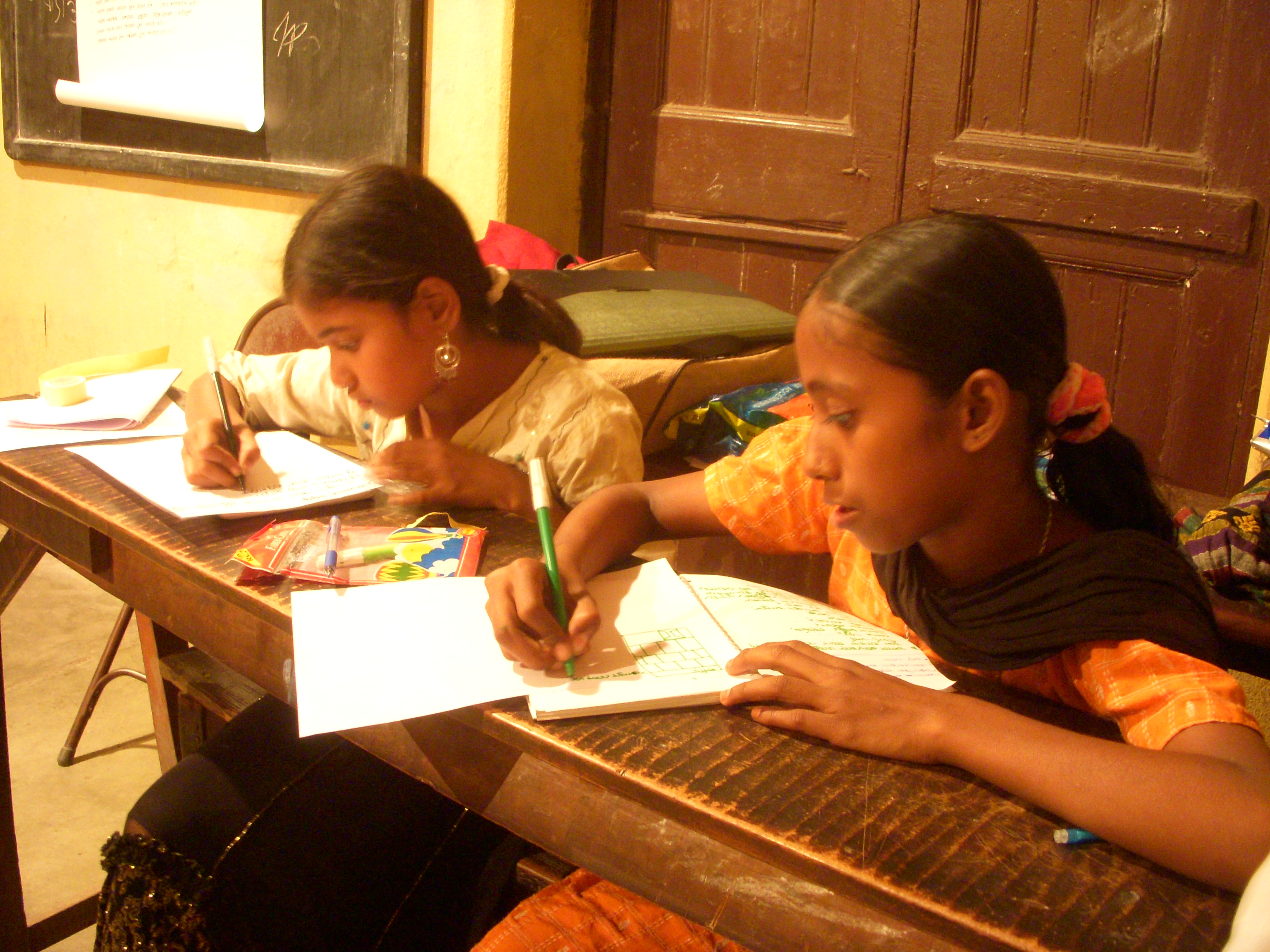Yesterday (Monday, November 26th 07), marked Session 1 of Neighbourhood Diaries in Bow Bazaar Neighborhood in partnership with local NGO Sanlaap.
Venue: Bow Bazaar Highschool
Time: Mondays, 6:00 – 8:00pm
Participants: 15 youth residents in Bow Bazaar
November 26th, 2007
Session 1: Understanding Neighbourhood Stereotypes
Objective
The Need for Neighborhood Journalism. To understand how it is important to re-write and re-tell your neighborhood’s narrative.
Activity: Understanding Assumptions and Hegemonic Narratives (30 minutes)
1. Divide the group in two groups. Give each group an, unlabelled photograph and ask them to collectively write a description of the image. Create a story behind the place – where is it, what happens there? What type of people live there? (10-15 min)
What are their 1st impressions?
What is happening in the picture?
What do these aspects of the picture tell us about the locality?
When people pass the place, what ideas do they form about it?
The two images are of New York city (an image of a socio-economicallydisadvantaged neighborhood) and Kolkata (a socially and economically upward) neighborhood.
2. Each group should read aloud their description and share their thought process behind their caption/description. (15 mins)
(Make a note of the exploratory questions that bring out better answers. As a facilitator, what are good questions to ask? Good eye contact, speak slowly and clearly)
3. Facilitators should then share the real facts of the images. Discuss at length the difference between the young people’s imagined stories and the real stories. How was our imagination informed? Where do we get certain ideas from about places, spaces, and people?
4. Discuss the phenomena of assumptions and stereotyping. How thought gets stuck at particular places. We do not ask, do not think of asking whether there is anything beneath the obvious assumptions about the place.
BREAK
Your Neighborhood: Discussion and Activity on Stereotypes (30 minutes)
Discussion
From a bigger scale let us now come down to our own paras/neighborhoods.
Just like we’ve realized the false/fragmented/skewed stories around different neighborhoods, how do you think other people think or imagine your personal neighborhood? What are the stereotypes surrounding your neighborhood?
Our thoughts often get stuck around some obvious things we see around, or some particular things that repeatedly surface on TV or in newpapers.eg. New York has highrises, this is true, but this is only one truth about New York. There are several other truths that we do not get to know. When a journalist comes to your para, what are the particular things he wants to cover/research more?
Collage Activity
Create a collective collage of images, sounds, words, smells about how the common person may interpret our neighborhood. Draw, Write, Cut and Paste.
Discussion
What are the common assumptions surrounding our neighborhood? Talk and explain in images. What is missing in this collage? What Truths are being circulated? What Truths are beings silenced and ignored? What stories aren’t being told? If we knew more untold stories, what would that do? How would that change perceptions?
Conclusion: Explaining the Project, Neighbourhood Diaries
This is how the outsider sees Bow Bazaar . Do you think it is important to tell the stories of this neighborhood as an insider and resident? What are the ways in which you, an insider, see Bow Bazaar? We believe the best sources of knowledge are your minds, your eyes, your words. The best expert to tell neighborhood stories is you. In the coming 15 weeks we shall try to search and find out what the inside stories of Boubazar look like. And you will find out, not us. In this workshop you will work as a Neighborhood Journalist telling the story of your lanes, you homes, your neighbors.
Writing Activity
Can you tell us a story about your neighborhood, which only you know? It can be a moment only, or an incident you are not likely to forget. Have the participants write and share their story? After listening to the story, explore how it gives a new life, new dimensions to understanding their neighborhood — and thus how this story needs to be told?
Check Out
How was this session like? Good/bad/Okay?
How do you feel about participating in the coming sessions? 1 word.

